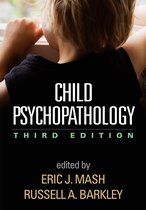Summary
Summary Child Psychopathology, Third Edition, ISBN: 9781462516681 Developmental Psychopathology (PSMOB-3)
- Course
- Institution
- Book
A comprehensive summary of the book used for Developmental Psychopathology: a development perspective. The summary has been extended so that it is appropriate to use in an open-book exam.
[Show more]




